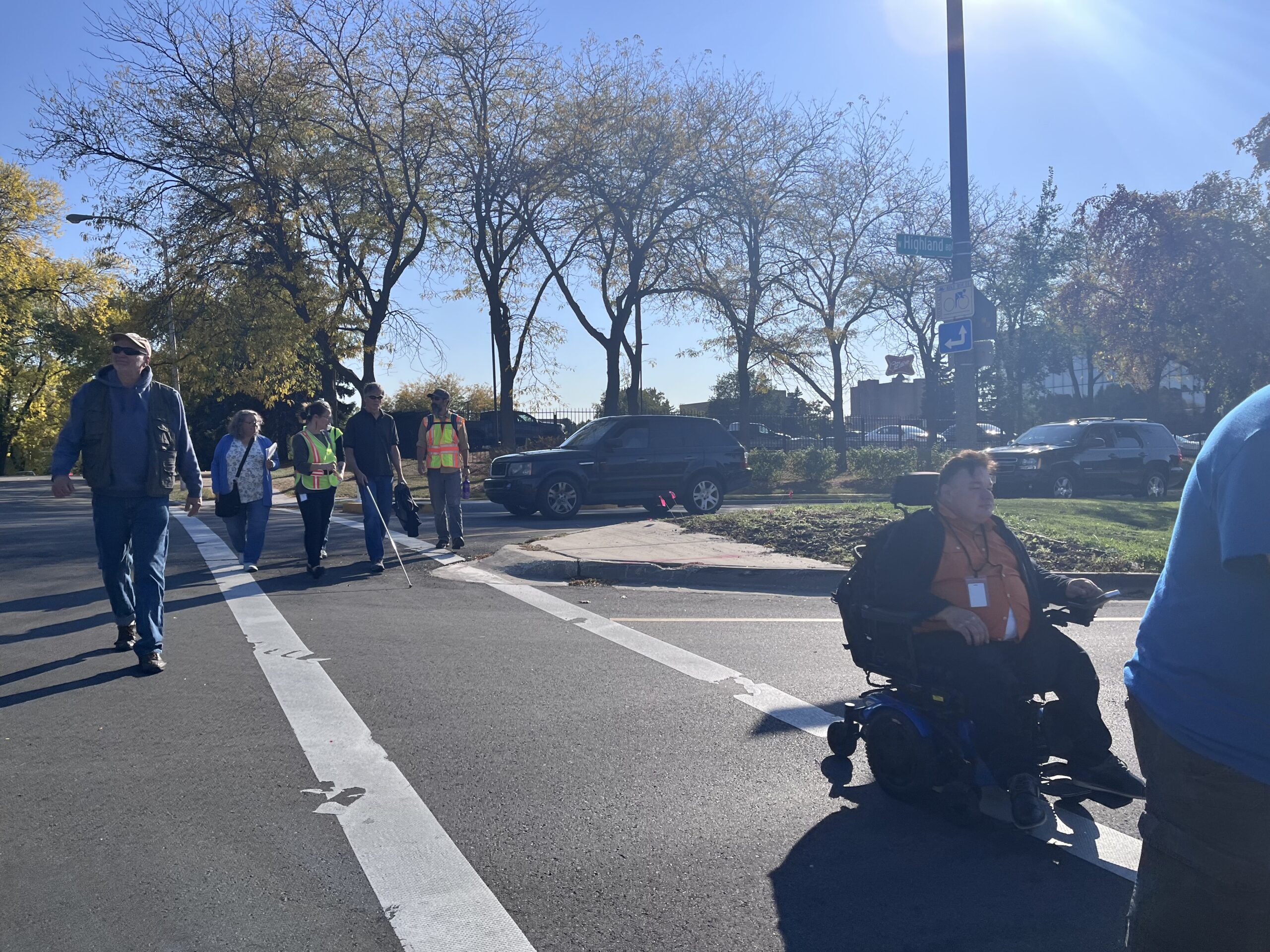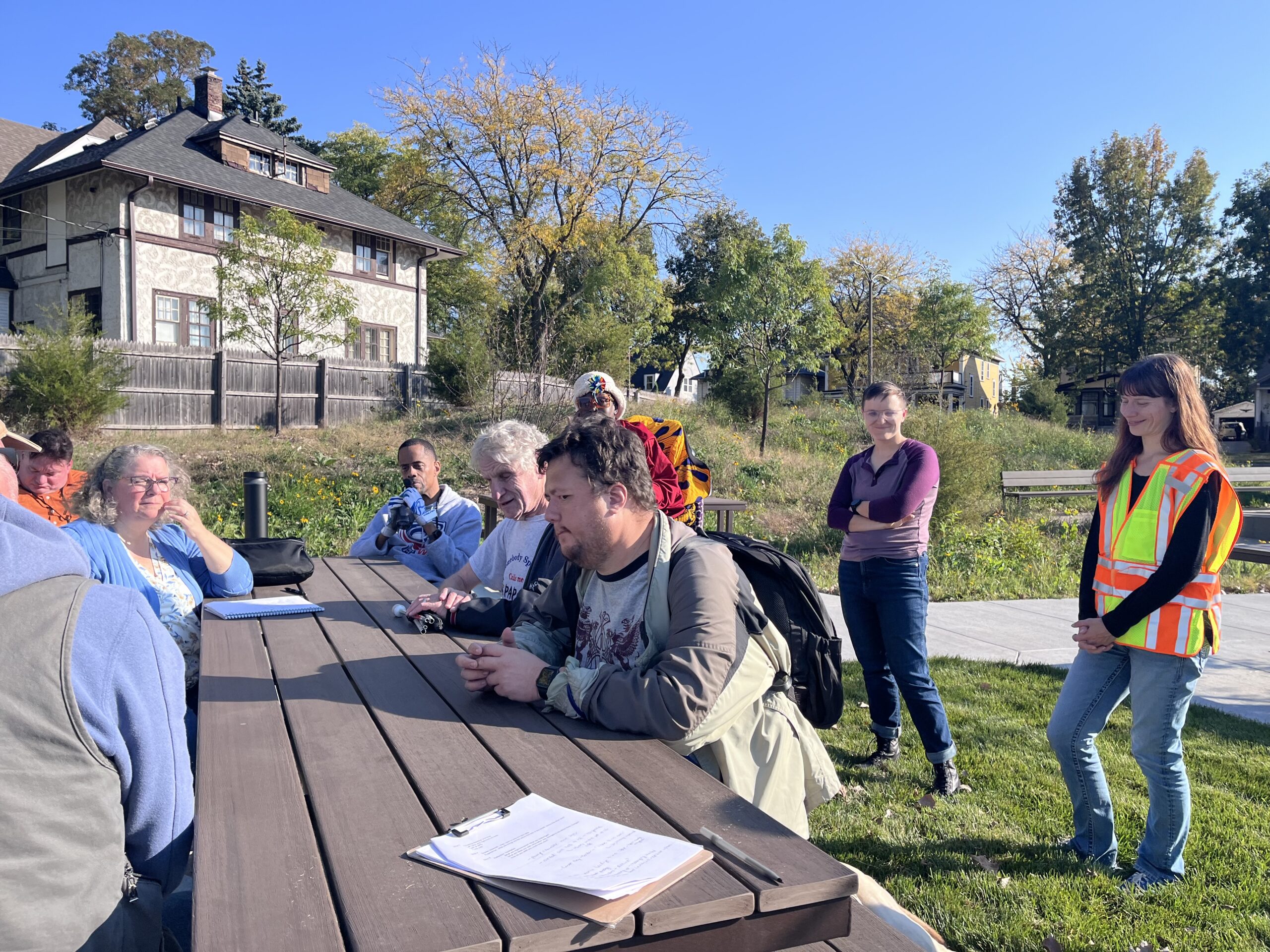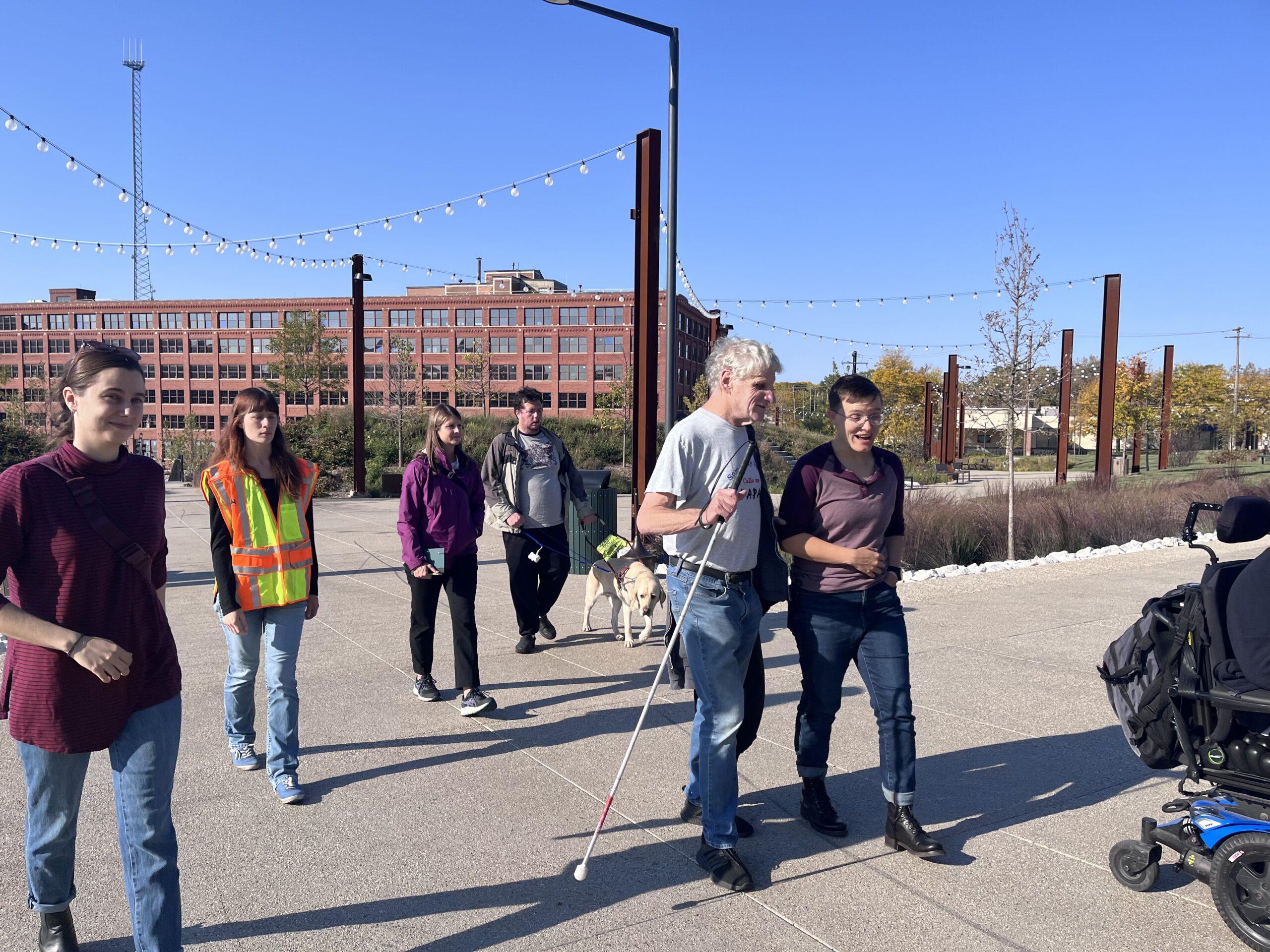In collaboration with Independence First, we had the privilege of conducting a walk/roll experience alongside individuals who live with mobility, vision, and hearing impairments. Their firsthand experiences brought invaluable perspective to our observations. Participants shared stories of navigating busy intersections, uneven sidewalks, and unsafe crosswalks, providing an eye-opening look at the everyday realities for people with disabilities.
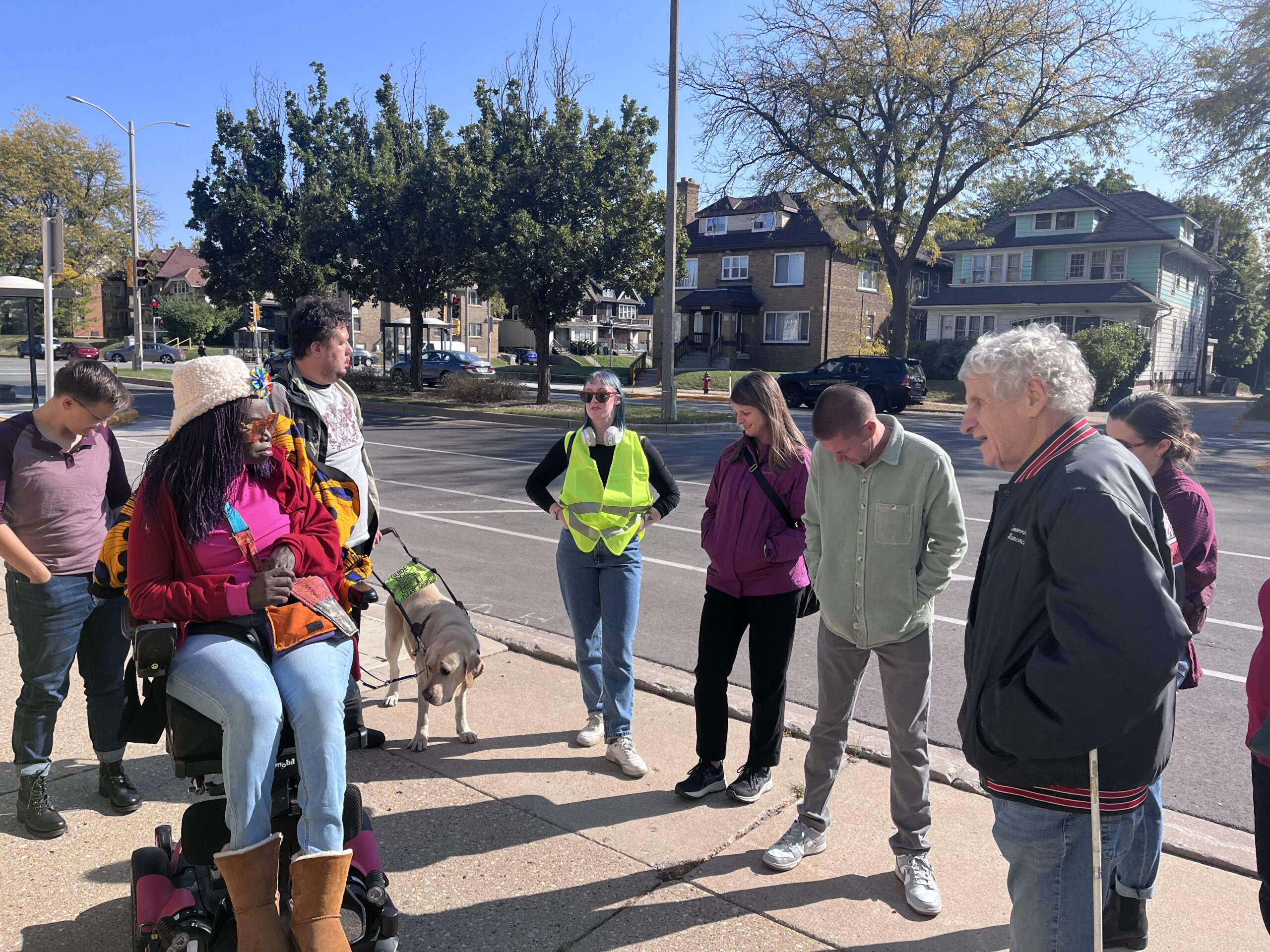
We focused on two areas in need of critical improvement, the intersections of 35th and Highland Boulevard and 36th and Highland. Last year, the City of Milwaukee conducted a road redesign along Highland, from 35th Street to Vliet Street. This project includes a new curbside protected bike lane protected by concrete islands, bus boarding islands, and a vehicle lane reduction. This project cut speeding by 24% and excessive speeding by 13%. However, Independence First staff had heard from their clients that some of the changes were confusing and added uncertainty to how they navigate the roadway. The goal of the event was to bring education to users and offer a time for productive feedback about road redesigns, especially as the City and County aim to achieve Vision Zero.
We were lucky to be joined by staff members from many levels of government: the City of Milwaukee, the City’s Pedestrian Bicycle Advisory Committee (PBAC), Milwaukee County, Southeastern Wisconsin Regional Planning Commission (SEWRPC), and the Wisconsin Department of Transportation (WisDOT). These staff members play a variety of roles in supporting transportation, including in redesigning roadways during reconstruction projects, reviewing curb cuts to ensure they meet the standards of the Americans with Disabilities Act (ADA), connecting users with transit options, and planning regional transportation strategies. Having these staff attend our walk/roll experience helped in answering questions about the road’s design and provided a way for residents with disabilities to demonstrate their experiences to staff.
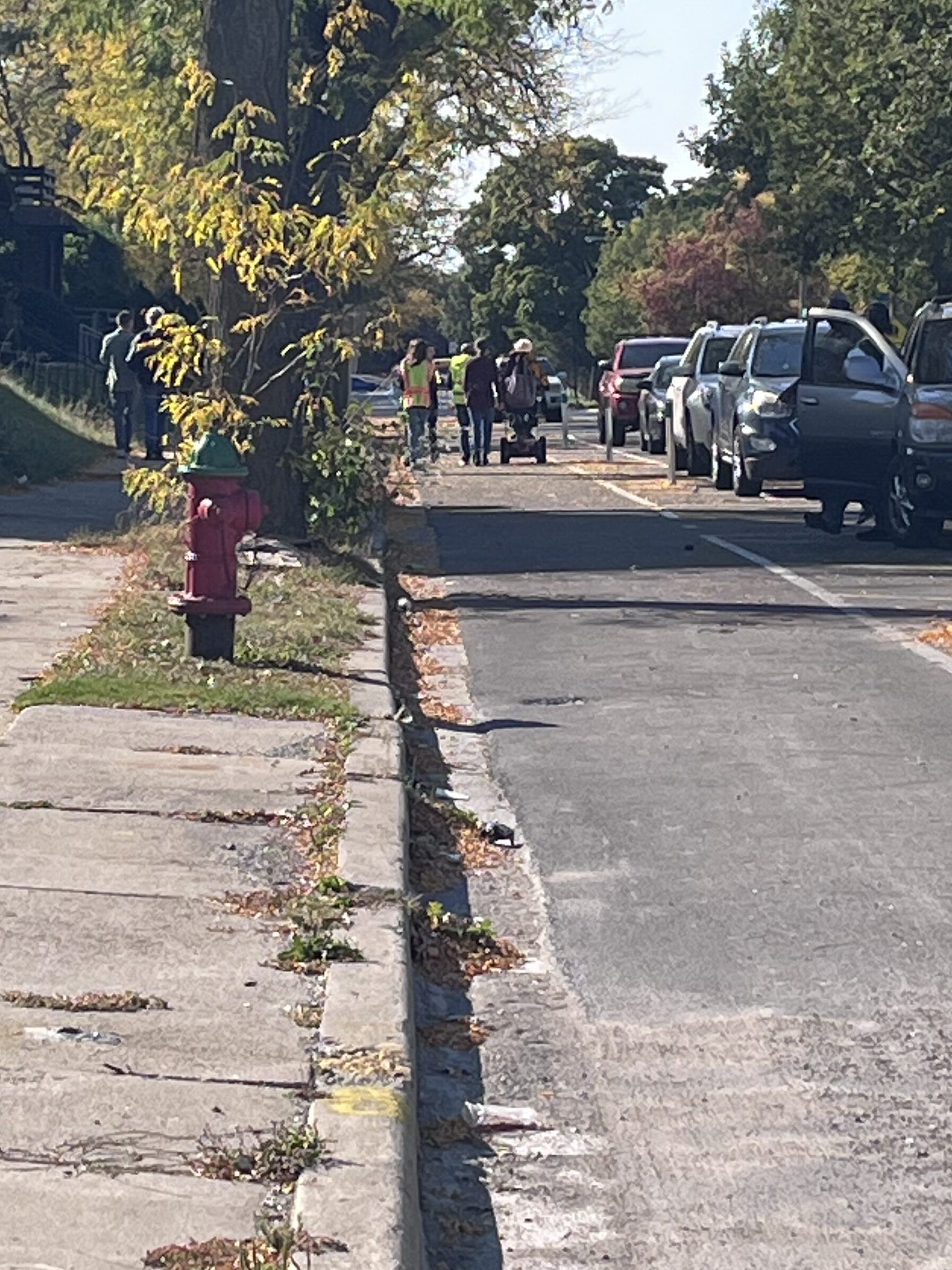
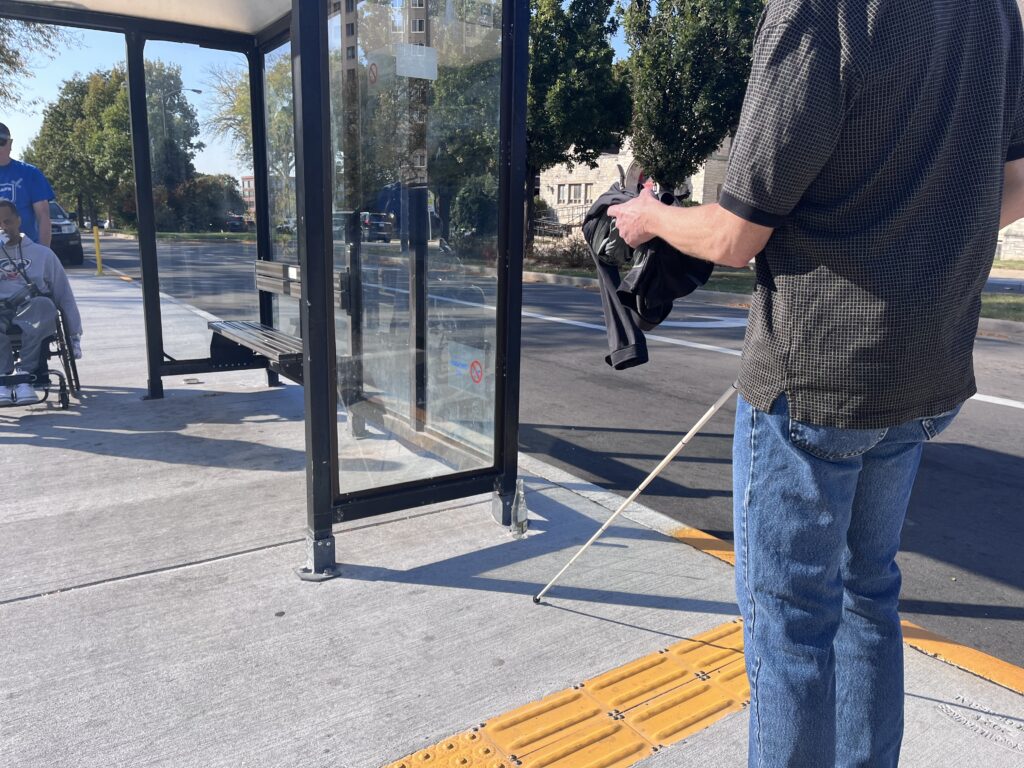
We started our walk/roll at 35th and Highland, splitting into two groups. We traversed the intersection on all four corners and then journeyed to 36th and Highland to wrap up the event at the new Davidson Park. Some of our observations included:
- The new curb cut on the northwest corner of the intersection of 35th and Highland was ideal for mobility device users, who found they could easily navigate their wheelchair over the low-grade slope. The outdated curb extension on the northeast side was much more challenging to navigate. Yet visually impaired users traveling with white canes and guide dogs had the opposite experience. This sparked a great conversation about how ADA requirements are not always sufficient for all users, and the great diversity of experiences amongst road users.
- Attendees were open to using the bus boarding islands but had some hesitations. Bus boarding islands are intended to help transit move faster, as bus drivers do not have to merge back into traffic. For attendees with visual impairments, figuring out how to get to the bus stop by crossing the bike lane was confusing, as was navigating the bus island itself. Plastic delineators on the bus boarding island caused one attendee to trip.
- At each of the lights, we struggled to cross the road in time. If attendees had been navigating the roads alone, many likely would have been unable to cross in the time given. Furthermore, left turns (especially those turning eastbound onto Highland) caused a major conflict, as left turning drivers often did not respect pedestrians’ right of way and cut attendees off in the middle of the street.
- When crossing Highland at 36th Street, one driver yelled at our large group that there was no stop sign. While that driver did yield to us, the reality is that he was obligated to allow us to cross. This was at a crosswalk marked by paint and with significant curb extensions – demonstrating that while these street designs do help with yielding behavior, driver education is still needed.
- On the southwestern portion of Highland Boulevard, we discovered another use for the new bike lanes: because the asphalt was smoother than the sidewalk, some attendees with mobility devices used the bike lanes rather than the sidewalk.
- Shout out to Davidson Park, which had accessible tables for us to sit at and debrief.
Key recommendations included improved installation of tactile pavement to guide vision-impaired pedestrians safely, clearer signage to alert drivers, and expanding the median at 36th and Highland to provide adequate space for crossing. These changes would not only improve safety but also create a more inclusive environment for all pedestrians. Additionally, attendees emphasized the importance of proactive communication and engagement. Attendees noted that they wanted to continue to support street changes for safety, but that they wanted to be informed earlier about the changes coming, and that agencies should try to standardize designs as much as possible across projects.
The event was a reminder of the power of collaboration and the importance of designing streets with the needs of our most vulnerable residents in mind. We hope to work with Independence First again to continue the work of connecting residents, planners, and decision makers.

